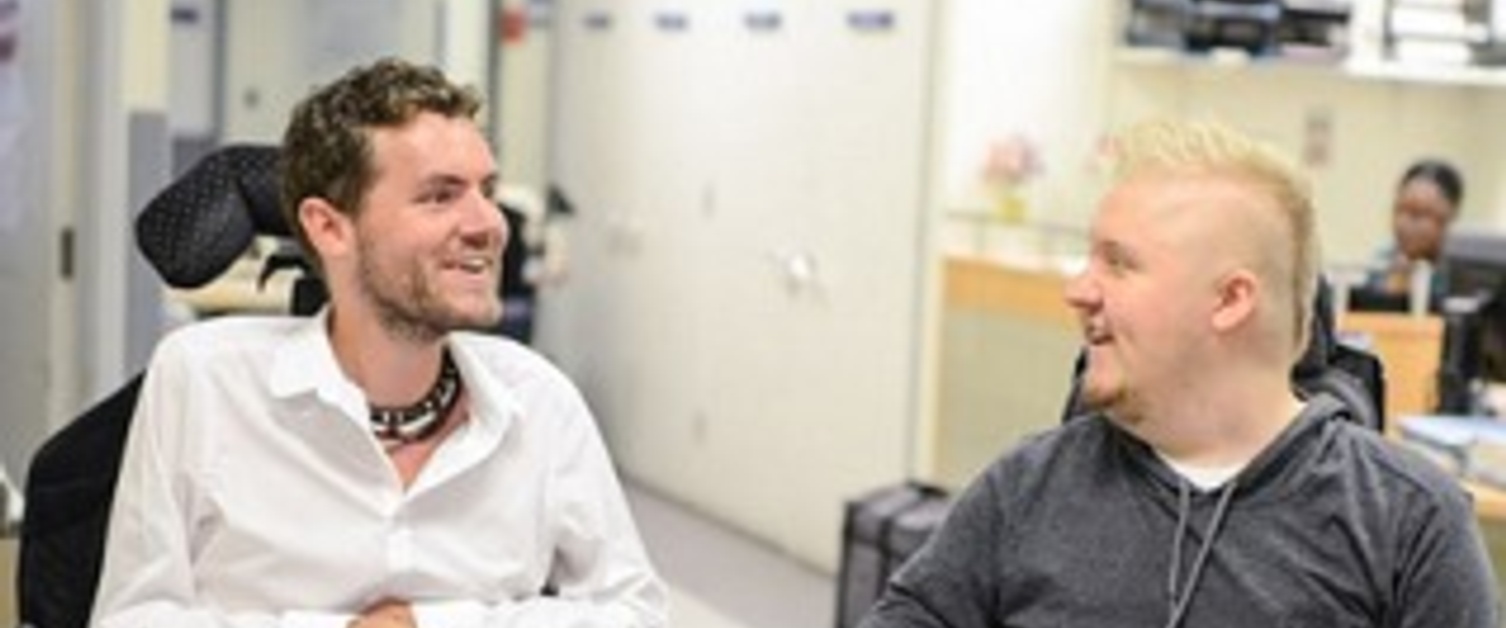Muscular Dystrophy

What is Muscular Dystrophy?
There are a number of different types of conditions under the umbrella of muscular dystrophy. Each type affects different muscles. The severity of the conditions and how the child is affected differs greatly. The conditions are normally progressive causing the muscles to gradually weaken over time. The conditions are either inherited or appear ‘out of the blue’.
There are more than 35 different conditions. Three of the more common are:
- Duchenne muscular dystrophy (DMD). This is a neuromuscular condition caused by a lack of protein and results in progressive muscle weakness of the body. The condition affects mainly boys;
- Charcot Marie Tooth (CMT) also known as Hereditary Motor and Sensory Neuropathy (HMSN). This is a group of conditions which affect the muscles below the knee and often the hands. The condition is hereditary affecting the sensory and motor nerves.
- Spinal Muscular Atrophy (SMA). This is a neuromuscular condition which causes muscle weakness in the body.
For more information:
The Muscular Dystrophy Campaign provides information on the above conditions and on other conditions under the umbrella of Muscular Dystrophy. The campaign will supply leaflets/booklets e.g. guides for families with a child newly diagnosed, other leaflets/related information and advice. The campaign also produce Target MD magazine. Please go to the Muscular Dystrophy website or NHS Choices for further information.
How a Physiotherapist can help?
Physiotherapy is ‘concerned with the physical treatment and management of the condition’ (from Neuromuscular conditions- a guide for families by Muscular Dystrophy Campaign). The child will be referred to a local NHS physiotherapy team. A physiotherapist will initially advise the child to be as active as possible. Activities like walking, swimming and cycling are ideal.
Later on in the condition the muscles can weaken and joints can tighten/stiffen. At this time a programme of regular exercises and stretching will be suggested. The exercises need to be fun and part of a daily routine. Physiotherapy may include hydrotherapy. Physiotherapists help to ensure the children lead as fulfilling a life as possible by advising families, carers and school staff on the condition (from Physiotherapy Management by Muscular Dystrophy Campaign). Most children with neuromuscular conditions benefit from regular physiotherapy reviews.
How an Occupational Therapist can help?
Major aims of the occupational therapist are to encourage activity and promote function. This includes interventions to delay or reduce complications due to the deterioration of muscle strength, and to give guidelines regarding activities, possibilities, adaptations and adjustments enabling the boys/men to live a socially active life together with family and friends. Assistive technologies such as seating and mobility play a primary role in providing postural support, comfort and independence for these clients.
Useful Contacts
Rydym yn croesawu gohebiaeth a galwadau ffôn yn y Gymraeg neu'r Saesneg. Atebir gohebiaeth Gymraeg yn y Gymraeg, ac ni fydd hyn yn arwain at oedi. Mae’r dudalen hon ar gael yn Gymraeg drwy bwyso’r botwm ar y dde ar frig y dudalen.
We welcome correspondence and telephone calls in Welsh or English. Welsh language correspondence will be replied to in Welsh, and this will not lead to a delay. This page is available in Welsh by clicking ‘Cymraeg’ at the top right of this page.